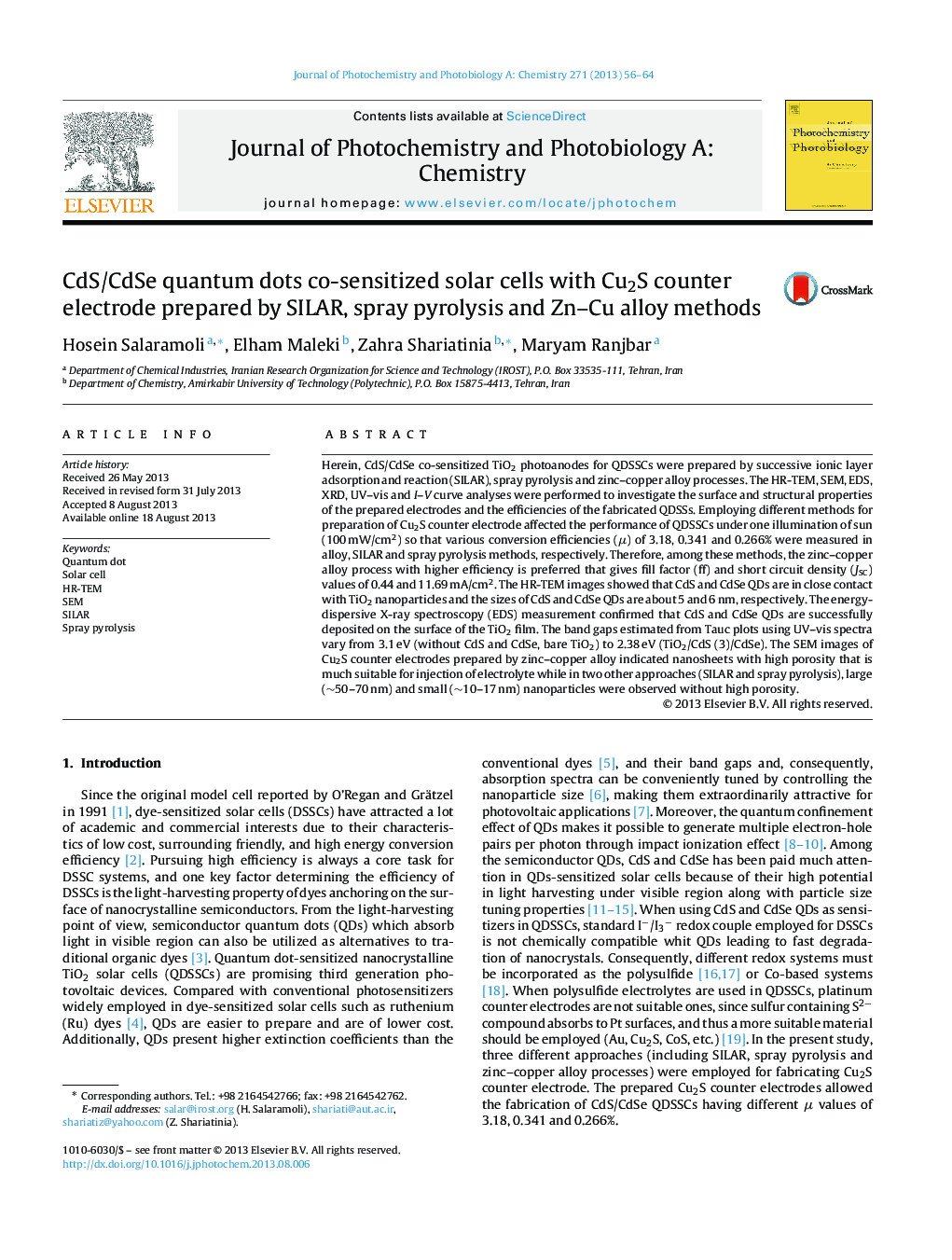| کد مقاله | کد نشریه | سال انتشار | مقاله انگلیسی | نسخه تمام متن |
|---|---|---|---|---|
| 27282 | 44014 | 2013 | 9 صفحه PDF | دانلود رایگان |

• Preparation of CdS/CdSe co-sensitized TiO2 photoanodes for QDSSCs.
• Employing alloy, SILAR and spray pyrolysis methods.
• Various conversion efficiencies measured equal to 3.18, 0.341 and 0.266%.
• The sizes of CdS and CdSe QDs were obtained about 5 and 6 nm.
• The band gaps vary from 3.1 eV to 2.38 eV (TiO2/CdS (3)/CdSe).
Herein, CdS/CdSe co-sensitized TiO2 photoanodes for QDSSCs were prepared by successive ionic layer adsorption and reaction (SILAR), spray pyrolysis and zinc–copper alloy processes. The HR-TEM, SEM, EDS, XRD, UV–vis and I–V curve analyses were performed to investigate the surface and structural properties of the prepared electrodes and the efficiencies of the fabricated QDSSs. Employing different methods for preparation of Cu2S counter electrode affected the performance of QDSSCs under one illumination of sun (100 mW/cm2) so that various conversion efficiencies (μ) of 3.18, 0.341 and 0.266% were measured in alloy, SILAR and spray pyrolysis methods, respectively. Therefore, among these methods, the zinc–copper alloy process with higher efficiency is preferred that gives fill factor (ff) and short circuit density (JSC) values of 0.44 and 11.69 mA/cm2. The HR-TEM images showed that CdS and CdSe QDs are in close contact with TiO2 nanoparticles and the sizes of CdS and CdSe QDs are about 5 and 6 nm, respectively. The energy-dispersive X-ray spectroscopy (EDS) measurement confirmed that CdS and CdSe QDs are successfully deposited on the surface of the TiO2 film. The band gaps estimated from Tauc plots using UV–vis spectra vary from 3.1 eV (without CdS and CdSe, bare TiO2) to 2.38 eV (TiO2/CdS (3)/CdSe). The SEM images of Cu2S counter electrodes prepared by zinc–copper alloy indicated nanosheets with high porosity that is much suitable for injection of electrolyte while in two other approaches (SILAR and spray pyrolysis), large (∼50–70 nm) and small (∼10–17 nm) nanoparticles were observed without high porosity.
Figure optionsDownload as PowerPoint slide
Journal: Journal of Photochemistry and Photobiology A: Chemistry - Volume 271, 1 November 2013, Pages 56–64